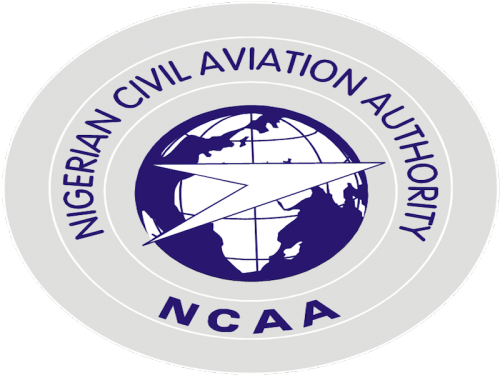Lagos Matters
35 Years Later, Lagos, Abuja, And 12 Other Airports Get New Weather Minima

The Nigerian Civil Aviation Authority (NCAA) has approved new weather minima for Lagos, Abuja, Kano, Port Harcourt and 10 other airports in the country.
The latest approval is coming 35 years after the regulatory agency carried out a similar exercise in all the airports across the country.
The new status for the 14 airports would take effect from tomorrow, Thursday.
The last time NCAA carried out a review of aerodrome operating weather minima for airports in the country was in 1983.
NCAA said that it has approved 300 meters Runway Visual Range (RVR) for the 14 airports from 800 meters RVR, which the country had been using since 1983.
The other new airports with the status are Kaduna, Ilorin, Gombe, Owerri, Sokoto, Uyo, Yola, Dutse, Calabar, and Enugu.
With the new status, aircraft can now land at the airports even with low visibility once it is within the approved minima weather condition for such an airport.
The new ratings indicated that the era of incessant flight delays and cancellations occasioned by inclement weather would be a thing of the past.
It would be recalled that flight delays and cancelations had massively affected flight operations in the country in the past one month.
No fewer than 300 flights were canceled or delayed across all the nation’s airports in December 2017 with thousands of passengers affected.
But, with the new status, more airlines would be able to take-off or land in the 14 airports even with low visibility and passengers could go ahead with their travel plans with fewer hitches.
The General Manager, Public Affairs, NCAA, Mr. Sam Adurogboye stated today that the agency reviewed 18 airports across the country before giving approval for the 14 airports.
He said that the 14 airports are now approved for Instrument Landing System (ILS) Category II Approach and Landing Minima.
According to Adurogboye, the present review allowed for takeoff as low as 150 meters RVR while the above-stated airports could permit landing with 300 meters RVR.
He noted that before the current review, the lowest visibility Category Two ILS in the nation’s airports was 800 metres/550 RVR (Runway Visual Range).
Adurogboye emphasized that the last time weather minima were actually reviewed was in 1983, stressing that a semblance of revision undertaken in 1993 only stated that the takeoff minima should be equal or greater than landing minima at all airports.
He added that this was to allow for an air return to the same airport should there arise an emergency.
He added: “This is in compliance with the provision of Part 8 of the Nigerian Civil Aviation Regulations (Nig.CARs Part 8), and in accordance with International Civil Aviation Organisation (ICAO) Doc.9365.
“In this review, the regulatory authority took cognizance of improvements in visual and navigational aids within the affected airports. The reviewed aerodrome operating minima would serve to enhance the operating capacity of the aerodromes. This is due to the fact that it will avail the operators with improved minima for low visibility operations.”
Apart from the 14, other four airports also reviewed in conjunction with the Nigerian Airspace Management Agency (NAMA) were Eket, Katsina, Kebbi, and Zaria.
Adurogboye hinted that the implementation of these revised aerodrome operating minima would, however, be based on compliance with applicable Standard Operating Procedures for Low Visibility Operations at the affected airports.
He said this is usually executed by the flight crew, Air Traffic Controllers (ATC), aerodrome operators and the Meteorological Agency.
To ensure the seamless operation of these revised minima, he insisted the Nigerian Meteorological Agency (NiMET) would continue to ensure the prompt and regular provision of required meteorological information, which he said would include flight visibility and Runway Visual Range (RVR) values to all ATC units in the airports.
He added: “Thus NiMET and NAMA shall ensure constant updating of the Automatic Terminal Information Service (ATIS) with the available RVR values as appropriate.”
“All airlines, aerodrome operators, and air navigation service providers are required to ensure adequate training of their personnel and flight crew that would be involved in low visibility operations.”
“The air navigation service provider is expected to ensure regular flight calibration of all available navigational aids. This is to ensure safe and efficient flight operations, especially during low visibility operations.”
-
Society News5 years ago
Jamaican man beheads wife after finding out their 6 kids are not his
-
Society News7 years ago
EXCLUSIVE: The Complete Story of Dolapo Awosika, John Fashanu and Prophet Kasali Sex Mess
-
News5 years ago
Pastor Osagie Ize-Iyamu, His Membership Of Secret Cult, And Other Issues Touching On His Public Credentials Examined by Barr. PATRICK I. BIOSE
-
News5 years ago
BREAKING: Ajimobi’s daughter-in-law blast Gov. Makinde, says gov can’t surpass ex-Oyo gov
-
Society News6 years ago
The Rise and Fall of “Jumoke The Bread Seller”
-
News5 years ago
BREAKING: 2 arrested as NAF begins investigations into Tolulope’s death
-
Crime6 years ago
Exclusive: Female Aide Fingered In Oko Oloyun’s Murder + Banking Transactions That Nailed Husband
-
News5 years ago
BREAKING: Police take over Edo House of Assembly as APC, Oshiomhole move to seize control
You must be logged in to post a comment Login